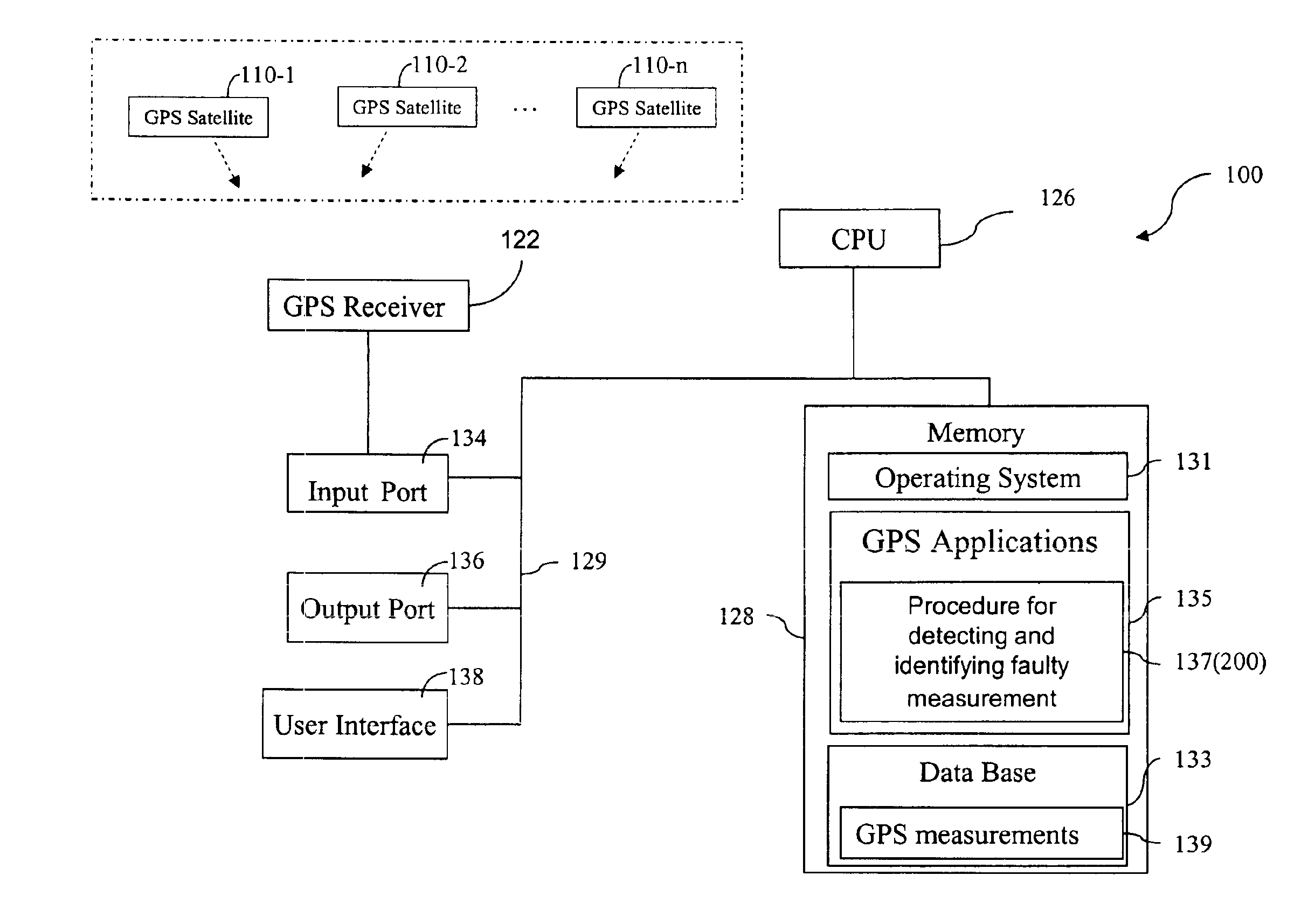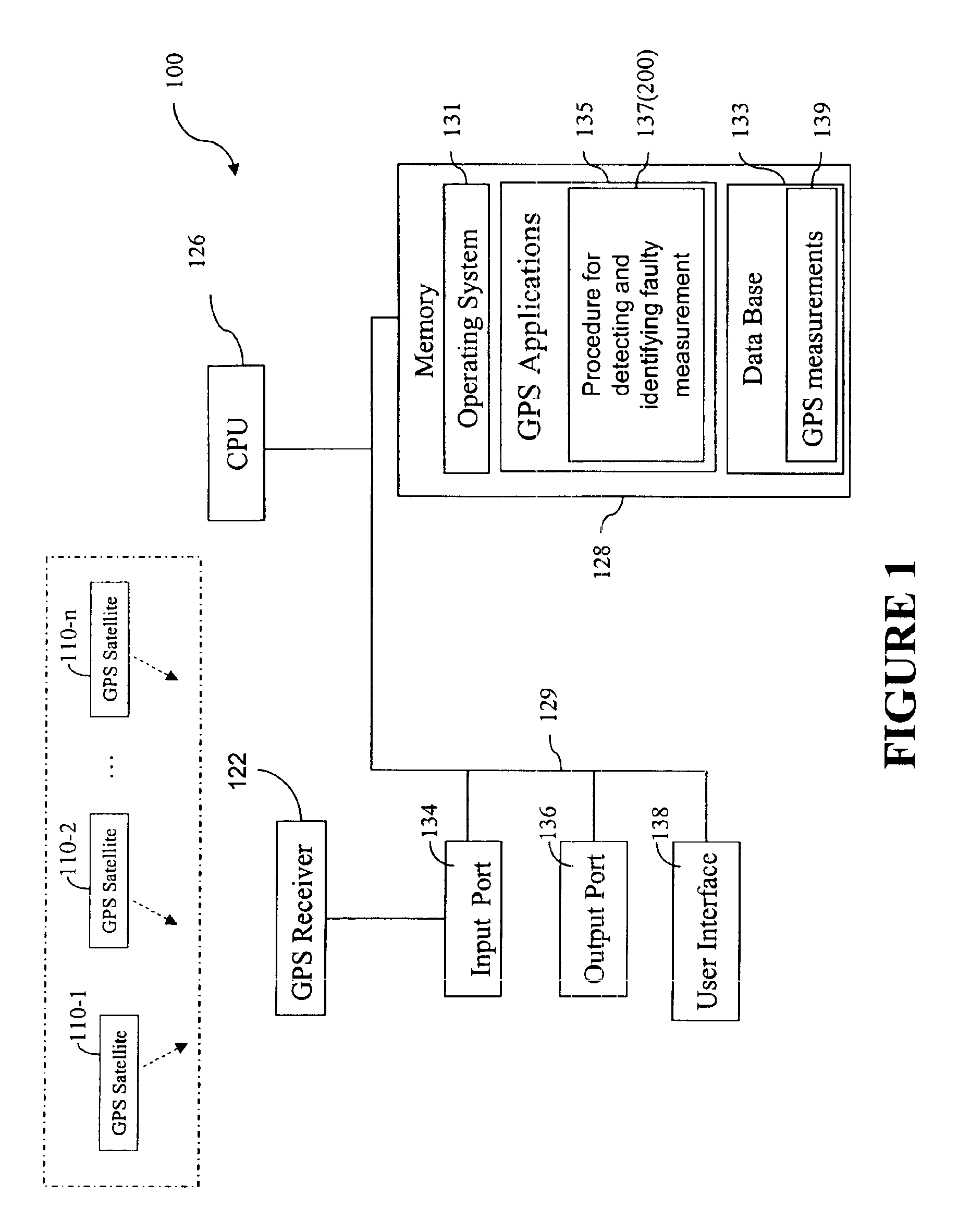Method for receiver autonomous integrity monitoring and fault detection and elimination
a receiver and autonomous technology, applied in the field of fault detection and elimination, can solve problems such as errors or noise in the calculated range, ambiguity in the whole cycle, and errors in the transit time differen
- Summary
- Abstract
- Description
- Claims
- Application Information
AI Technical Summary
Problems solved by technology
Method used
Image
Examples
Embodiment Construction
FIG. 1 illustrates a computer system 100 that can be used to carry out the method for detecting and identifying a faulty GPS measurement among a plurality of GPS measurements. Each of the plurality of GPS measurements is taken by a GPS receiver 122 based on signals from one of a plurality of satellites 110-1, 110-2, . . . , 110-n, where n is the number of satellites in view of the GPS receiver 122. The plurality of satellites, or any one or more of them, are sometimes referred to hereafter in this document as satellite(s) 110. In some embodiments, the GPS receiver 122 and the computer system 100 are integrated into a single device, within a single housing, such as a portable, handheld or even wearable position tracking device, or a vehicle-mounted or otherwise mobile positioning and / or navigation system. In other embodiments, the GPS receiver 122 and the computer system 100 are not integrated into a single device.
As shown in FIG. 1, the computer system 100 includes a central process...
PUM
 Login to View More
Login to View More Abstract
Description
Claims
Application Information
 Login to View More
Login to View More - R&D
- Intellectual Property
- Life Sciences
- Materials
- Tech Scout
- Unparalleled Data Quality
- Higher Quality Content
- 60% Fewer Hallucinations
Browse by: Latest US Patents, China's latest patents, Technical Efficacy Thesaurus, Application Domain, Technology Topic, Popular Technical Reports.
© 2025 PatSnap. All rights reserved.Legal|Privacy policy|Modern Slavery Act Transparency Statement|Sitemap|About US| Contact US: help@patsnap.com



